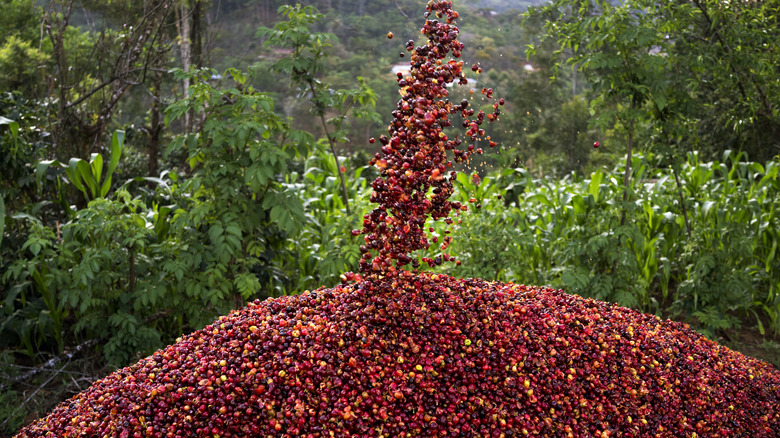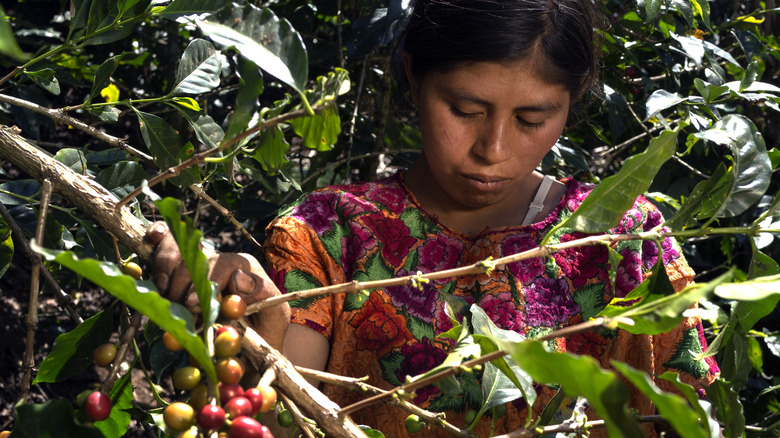Why Guatemala's Coffee Is So Special
Guatemala stands out for many things, not the least being a string of towering active volcanoes. Add the subtropical rainforests, biodiverse jungles, and rich Mayan culture, and that's plenty to inspire a deeper look, according to Lonely Planet. But some of the most accessible treasures that Guatemala offers the world come in the form of grassy-green beans wrapped inside bright-red cherries — millions and millions of them. After journeying to far-flung locales, they emerge as rich, chocolate-brown roasted morsels with an indescribable aroma.
You guessed it: Guatemalan coffee beans. With more diverse microclimates than nearly any country in the world, per World Traveler Coffee Roasters, it's no surprise that Guatemalan coffee farms produce beans like no other. Eight different coffee-producing regions heavily support the Guatemalan economy, and the USDA reported in 2020 that 96.8% of those beans come from small coffee farmers rather than mega-producers. That makes the distinct robust flavors even more extraordinary — and appreciated. So here's a shout-out to Guatemala coffee and what makes it so unique.
Microclimates and volcanic soils
The world of wine gives a lot of credit to "terroir," a term encompassing soil, climate, elevation, and terrain, per JJ Buckley. This magic combination of nature, when tamed to perfection, is what defines the resulting wine. Coffee farmers in Guatemala may not use French words, but the concept is very much the same. Mother Earth provides the "sense of place," resulting in those coveted little coffee beans, regardless of the microclimate in which they grow.
The National Coffee Association USA explains that the most prolific Guatemalan coffee-growing regions benefit from rich volcanic soil, high altitudes, and rugged terrain, producing what's known as Strictly Hard Beans (SHB). The plants flourish in altitudes above 4,500 feet, gifting the world with deeply complex beans and flavor notes of chocolate or spice. World Traveler Coffee Roasters credits the soil, particularly its composition of clay, metamorphic rock, and minerals from volcanoes and lakes.
All eight coffee regions contribute to the SHB volume shipped across the globe, but each has microclimate nuances affecting flavor and body. For example, World Traveler Coffee Roasters points out the sunny volcanic slopes and abundant rainfall of Antigua, and the comparative density and shade of the Acatenango Valley, where farmers harvest by hand and dry their beans in the sunny ocean air. So it seems we have biodiversity to thank for the special Guatemalan coffee steaming in our cups, as well as the thousands of small farmers growing and harvesting their country's bountiful offerings.

